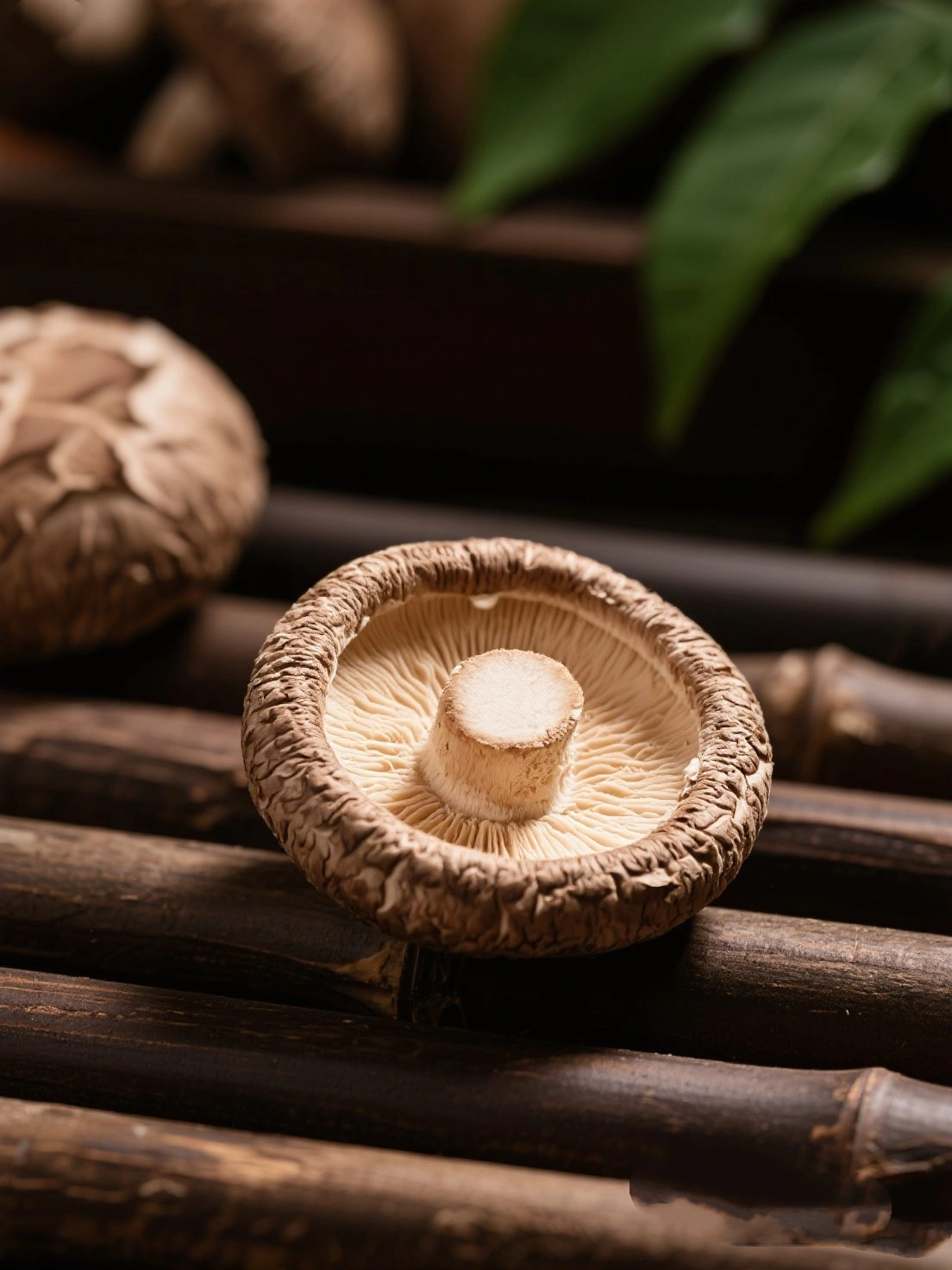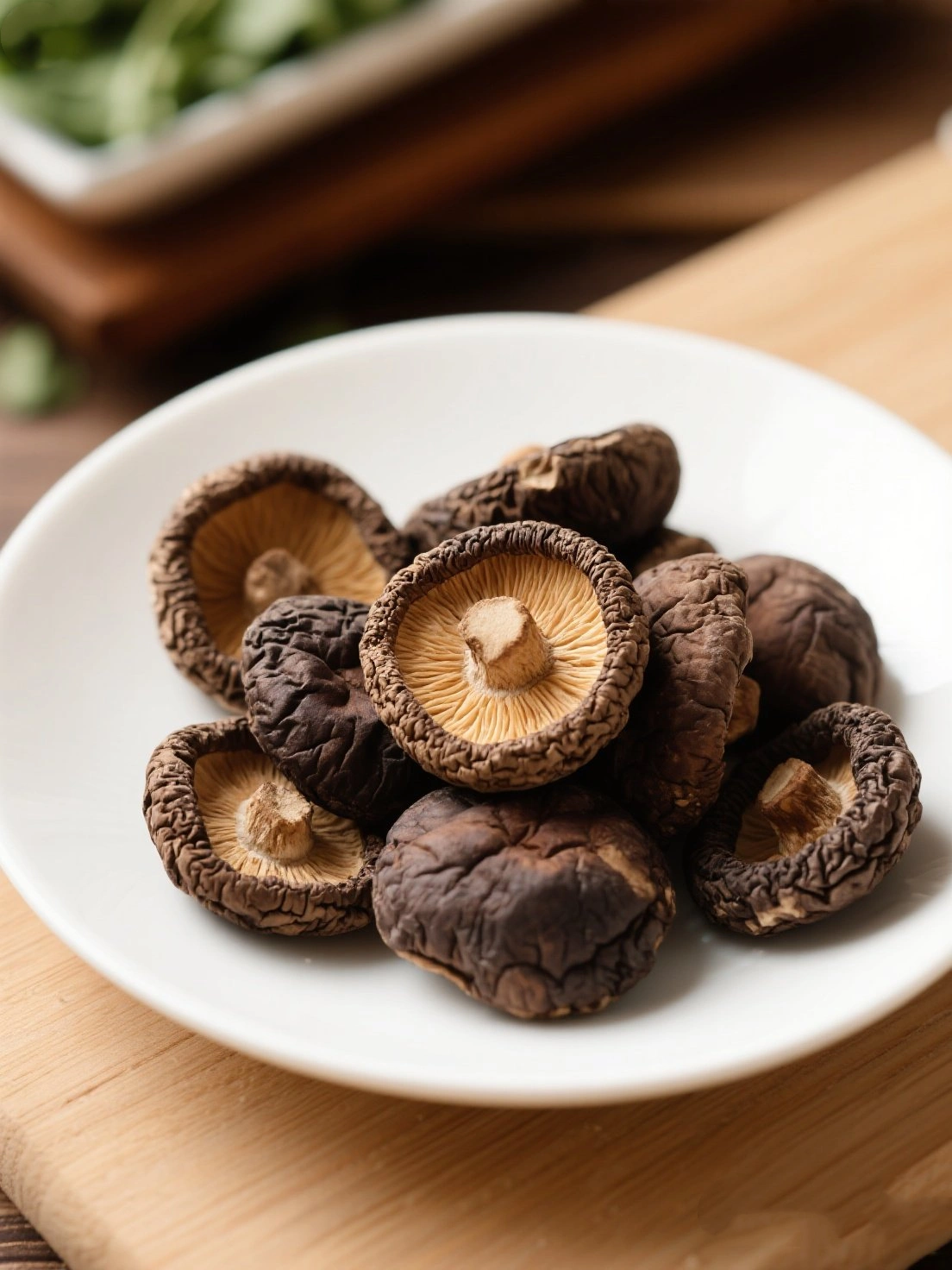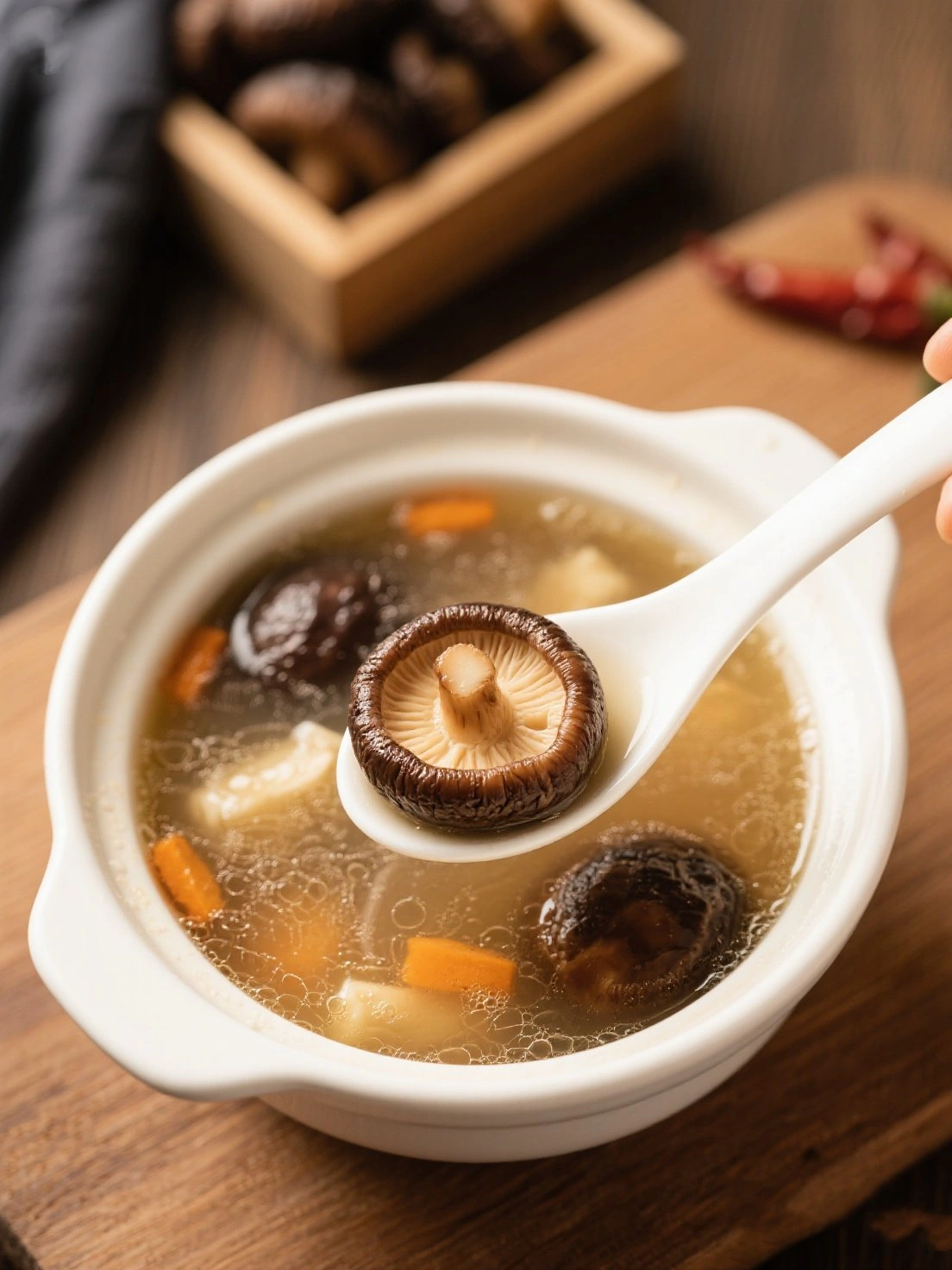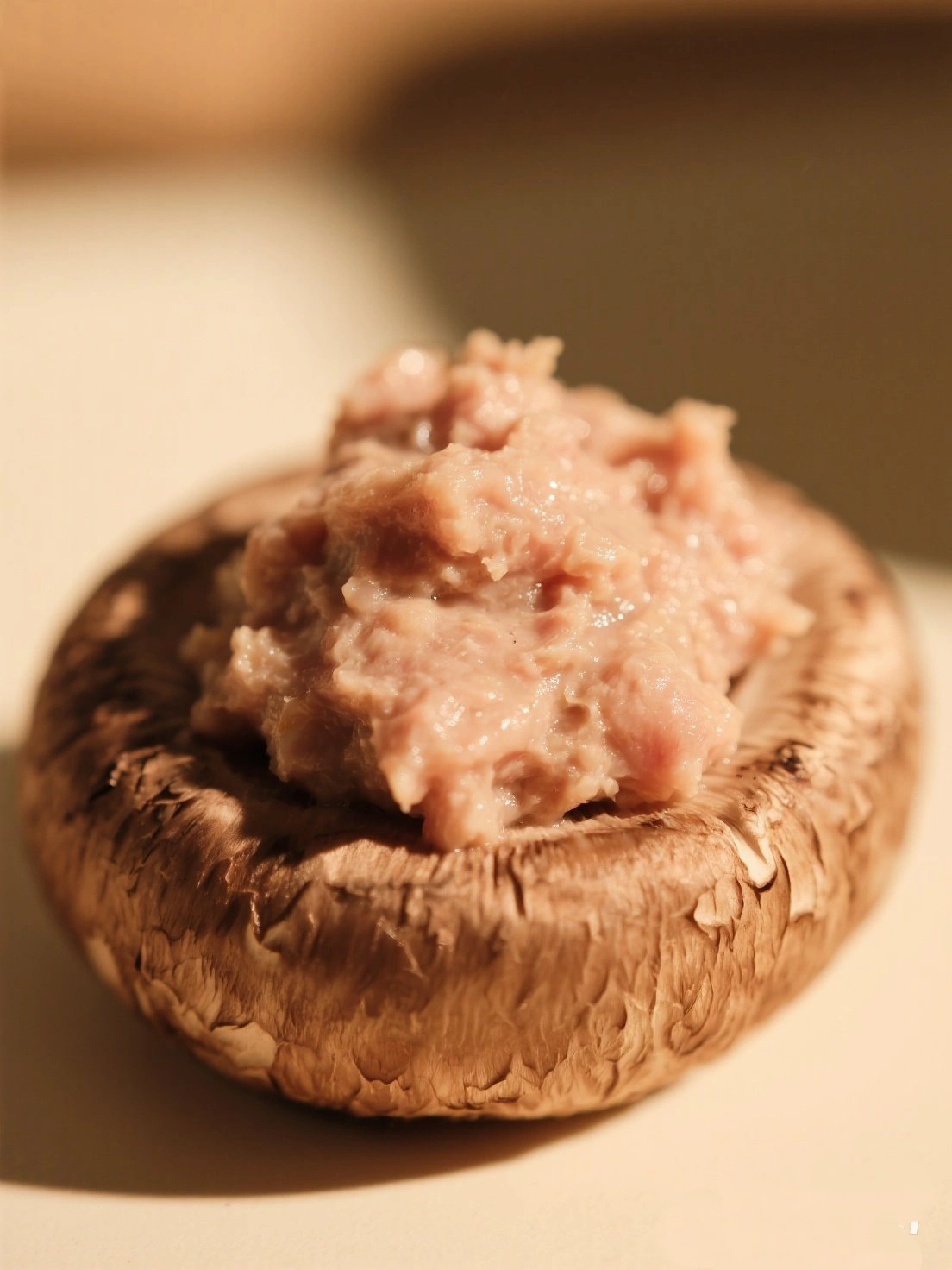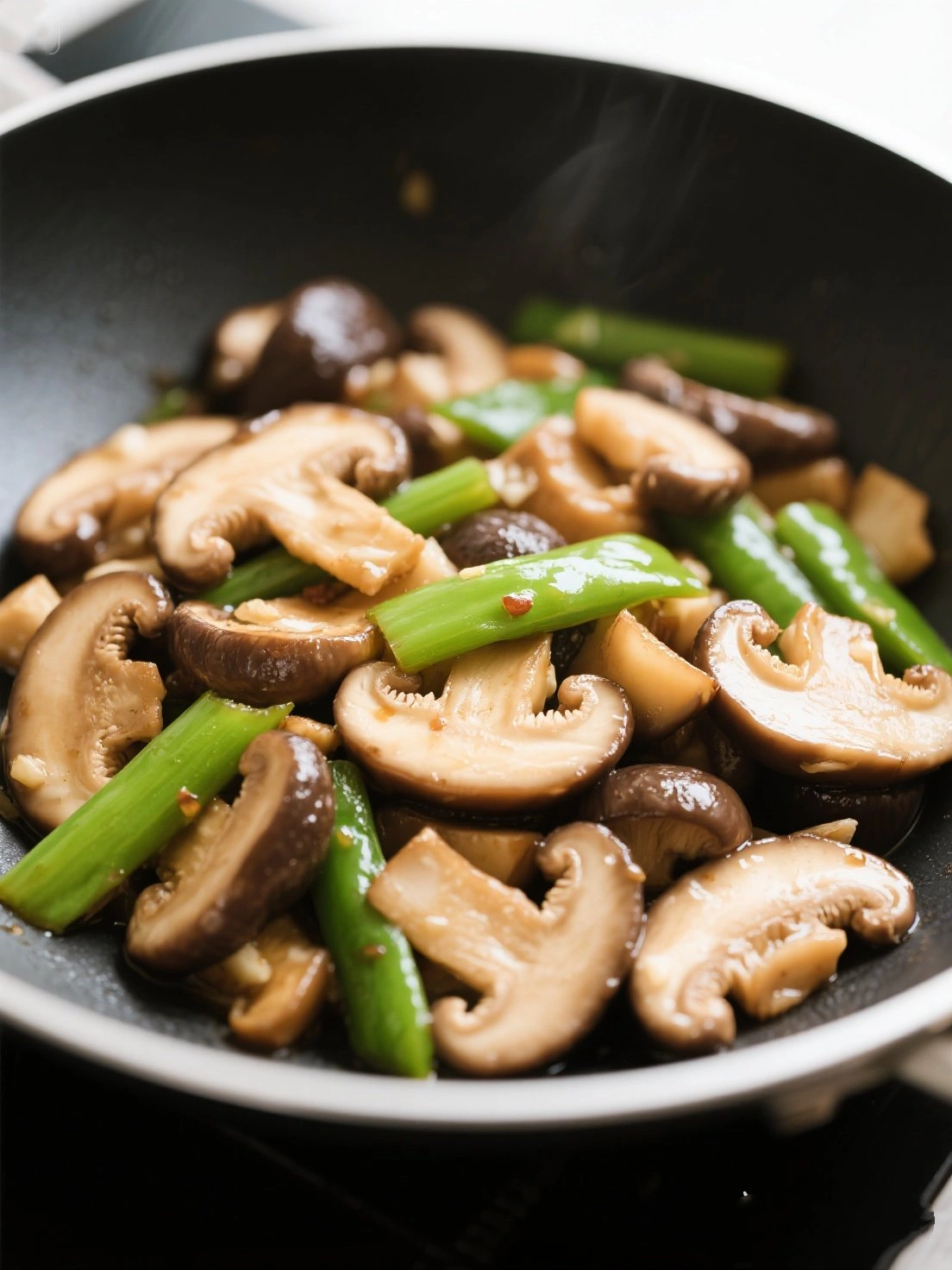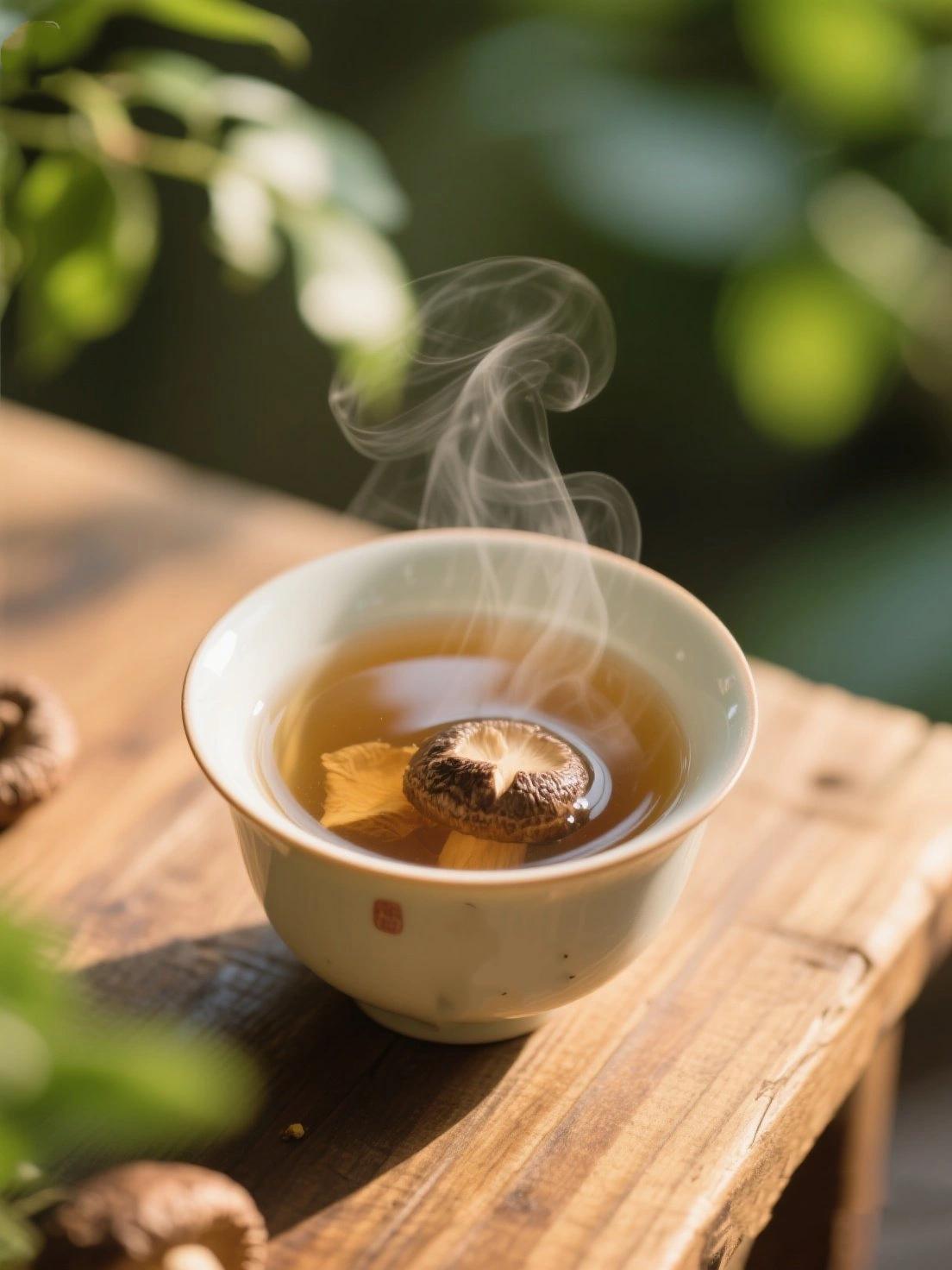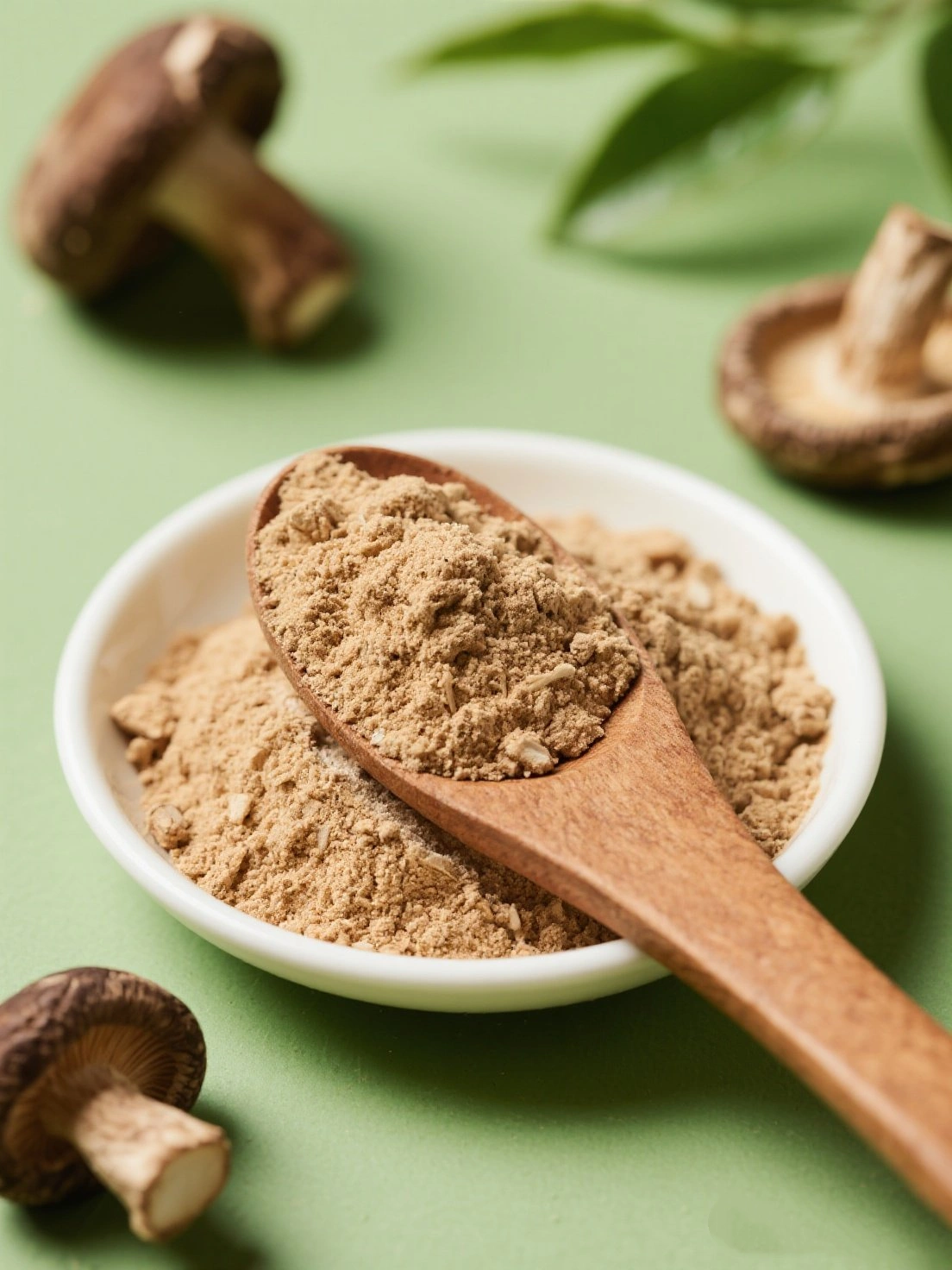Black mushrooms (hei xiang gu), also known as shiitake mushrooms, have been cultivated in China for over 1,000 years and revered in Traditional Chinese Medicine for their immune-enhancing properties. These dark-capped fungi were first documented in the "Compendium of Materia Medica" as a superior tonic food that strengthens qi and resolves dampness.
In Chinese culinary tradition, black mushrooms are prized for their rich umami flavor and meaty texture. The highest quality varieties come from Zhejiang and Fujian provinces, where the humid climate and oak log cultivation method produce mushrooms with exceptional aroma and medicinal compounds. Unlike common button mushrooms, black mushrooms develop deeper flavors when dried and rehydrated.
Black mushrooms contain unique polysaccharides like lentinan, which has been studied for its immune-modulating effects. In TCM, they are considered warming and are used to support spleen and stomach function, while also helping to lower cholesterol and improve circulation.
